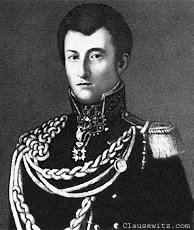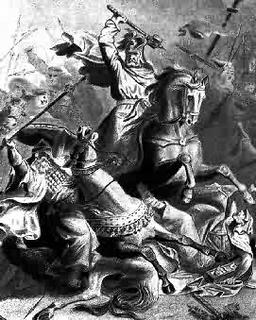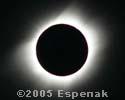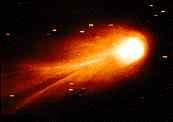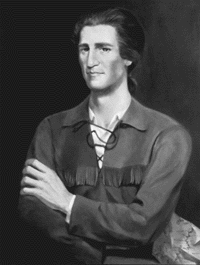This is coolbert:
So, was and is chess a valid analogy of war? A valid analogy that presents "war" in a game form?
Several things need to be kept in mind regarding the game of chess and the analogy the chessboard has to the
real world battlefield.
The chess master
IS able,
at a single glance able to know with
precise accuracy, the positions of all
his pieces [units] on the board,
AND also know with precise accuracy the positions of all the
opposing pieces [units] on the board.
Knowing with precision the position and status of all his own pieces [units],
AND also the position and status of all his oppositions pieces [units], allows the chess master to formulate very precise strategy and tactics [movement of pieces] on the chessboard that can lead to victory. A preciseness that follows the rules of the game, rules that
do not allow for deviation!
Up until recent historical times, say even until the time of the American Civil War, a general officer on the battlefield, the combat commander,
WAS able to know with great accuracy the positions and status of
his units [pieces] in actual combat with the enemy
AND also know the same regarding the enemy units [pieces] his forces were in contact with.
If suitable dominating terrain was available, the combat commander of say the stature of a Wellington, Napoleon, Meade, or Lee
WAS able to determine, at almost a single glance, the positions and status of his units on the battlefield, And also able to determine with a great degree of accuracy the same regarding the units of his
opposition.
Dispersion of troops over a wide area was just
not something practiced by armies prior to the combats of the two world wars of the twentieth century. At Waterloo, for instance, about
150,000 soldiers were arrayed against one another on a line of contact [LOC, the actual point where the combat forces of the two armies are in actual contact with one another] that spanned a distance of
about two miles. Fifty years later, at Gettysburg, about
200,000 soldiers fought on a battlefield where the LOC spanned a distance of about
three to four miles maximum. Napoleon and Wellington at Waterloo, and Meade and Lee at Gettysburg knew with great precision where their units were, the status of those units, and how the battle was progressing, either in their favor or against. This the respective combat commanders could tell at almost a single glance.
Also known to the chess master is that each piece on the chess board has a precise ability to
move and to capture [kill] opposing pieces. A precise movement and capture ability that has been defined by the rules of the game itself. A white knight on the chess board has the
same movement and capture [kill] ability as does a black knight. A white rook on the chess board has the
same movement and capture [kill] ability as does a black rook.
A similar situation with regard to movement and capture [kill] capability existed on the real world battlefield existed until relatively recently [up until again, the two world wars of the twentieth century].
It could be safely said, with a general but fairly accurate degree of accuracy, that one British battalion of infantry on the Waterloo battlefield had about the
same movement and killing [capture] capability as did a French infantry battalion. A battery [six guns] of British artillery had about the
same movement and killing [capture] capability as did a battery of French artillery. The same can be said about a squadron of British cavalry. Movement and killing [capture] capability were about the
same as a squadron of French cavalry.
Analogies, those that perhaps
only existed in general sense to begin with, between the chessboard and the real world battlefield probably ended about the time of the end of the American Civil War [1865].
Dispersal of military units began in the years following 1865 as a response to the exponential and ever increasing lethality of modern weaponry. A modern army of 200,000 would now
NOT have a LOC of four miles as was present at Gettysburg. The LOC for a modern army of comparable size would be on the order of hundreds of miles!!!
The modern combat commander is
NOT able to know with a great degree of precision the exact locations and status of his units [pieces]. What
he does know is the
imprecise locations and status of his units [pieces]. This is quite
UNLIKE what the chess master knows. What the modern combat commander knows about his units positions and status is based upon messages relayed to him via either field telephone, teletype, or radio traffic of either a message or data format. These messages are subject to delay, garbling, or contain impreciseness of communications that further hampers the ability of the combat commander from knowing exactly where all his units are and what their immediate status is.
In addition, the modern combat commander knows even
LESS about the exact positioning and status of enemy units [pieces]. Again, this is in
marked contrast to the chess master, who knows at a single glance the exact position and status of all the opposition pieces [units] on the chess board. Even possessing a formidable intelligence apparatus to determine the locations and status of enemy units [pieces] on the battlefield does
not always assist the combat commander to achieve knowledge of the enemy units [pieces] to the desired degree. Remember, as I have mentioned in previous blog entries, not only is determining the locations and status of enemy units [pieces] difficult, as the enemy is trying to prevent you from finding out this information, but at the same time, the enemy is attempting to deceive you in this regard by feeding you deception. Deception that can mislead the combat commanders intelligence apparatus.
This lack of precise information on the modern battlefield is commonly referred to as the
"FOG OF WAR". Remember the experience of Jellicoe at Jutland? At the critical moment of Jutland, Jellicoe was
only somewhat sure of the locations of his own ships, not even taking into account was exactly he knew about the locations of the German ships. Trying making vital decisions based upon such inexact information!!
Furthermore.
Remembering the above passage from this blog entry as shown below, to what degree of preciseness can modern units or machines of war be
quantified with regard to movement and capture [kill] ability??
"Also known to the chess master is that each piece on the chess board has a
precise ability to
move and to capture [kill] opposing pieces. A precise movement and capture ability that has been defined by the rules of the game itself."
The ability on the modern battlefield of units [pieces] and machines [tanks] to move and kill [capture]
CAN be quantified with a degree of superficial preciseness. But
only to a certain degree. There is
much about the ability of modern units and machines on the modern battlefield that is subjective and must be taken into account by the combat commander. Subjectivity that has a
profound impact upon the battle to be fought.
Take for instance, the Abrams M-1 tank and the Soviet T-72 tank. Most "experts" would consider these tanks to be
roughly the equivalent of one another. When the "experts" look at these things, they look at obvious, superficial criteria, amount of armor [thickness], the caliber of the main gun, etc. But there area also
many other factors that must be considered when evaluating the relative abilities of two tanks being used by opposing sides [such was the case during the Iraq wars, when the U.S. fielded the Abrams tank, and the Iraqi the T-72 tank]. The combat commander is constantly taking into consideration
an entire host of factors that when taken as a whole, create a very subjective judgment as to movement and "kill" ability. Among those factors would be: [in no precise order].
Number of rounds [ammo] each tank carries. [having more rounds is said to be an advantage].
Who possesses better
night vision equipment?
Can each tank fire and hit the target while
moving? [gun stabilizer].
Which tank has better
ranging and aiming equipment?
Whose tank crews are
better trained and motivated?
Does the interior of the tank
tire the crew from constricting movement?
Whose tank can
fire, hit, and kill the opposing tank at a
longer range?
Is my [the combat commanders] initial plan to fight
defensively or offensively? [some tanks fight better defensively].
Which side has better
resupply and refueling capability?
Whose tanks are
more robust mechanically and are less susceptible to breakdown?
Does the turret have to be returned to the
"zero" position prior to reloading the main gun? [this was the case with the T-72. The turret has to be returned to a position where the main gun points straight ahead and its aligned parallel with the main axis of the hull to be reloaded].
Whose tanks are
heavier? And germane to the former question, will
rivers have to be crossed? [with regard to crossing rivers and bridges, the heavier tank is said to be at a disadvantage].
Given such a host of questions that need to be answered, it can be seen that only when the battle develops, can the modern combat commander get a
"feel" as to how well his tanks [knights] can move and "kill" [capture] on the battlefield. This is in marked contrast to the chess master, who knows with precision, based upon the rules of the game, what movement and capture capability each piece has at any given moment.
And the above evaluation is
just for one weapon system among a large number of weapon systems on the modern battlefield!!
Finally, what does the Soviet defector Suvorov have to say on the analogy of chess to modern war?
From the book "The Liberators" by Suvorov:
"Tactics, brother, are the
most complicated subject on earth. But just tell our generals that tactics are more complicated than chess and they laugh their heads off, they simply don't believe it. But it's really no laughing matter. Chess is the
crudest form, the most superficial model of a battle between two armies and the most primitive of armies [based upon the armies of the Mahabharata, 1400 B.C.] at that. In all other respects,
it's exactly like war . . . A contemporary battle . . . is
a thousand times more complicated than chess. If you want to model a small contemporary army on a chess board, the number of chess men, with all kinds of different capabilities will have to be sharply increased. Somehow, you will need to designate tanks, anti-tank rockets, anti-tank artillery and attack planes, strategic bombers, air transport and helicopters - - you just can't list them all . . . and all demand a united plan, a united strategy and the closest possible co-ordination."
[The above is taking into account only the friendly forces [pieces]. The above does not take into account the enemy forces [pieces]. Nor does it take into account the "fog of war"].
coolbert.

